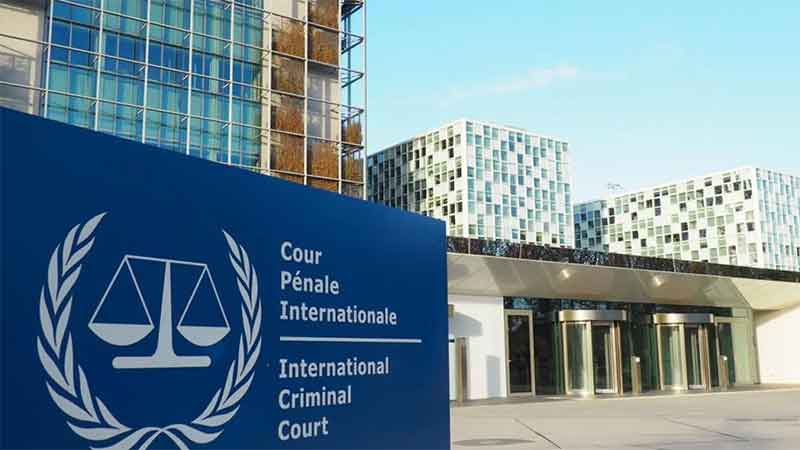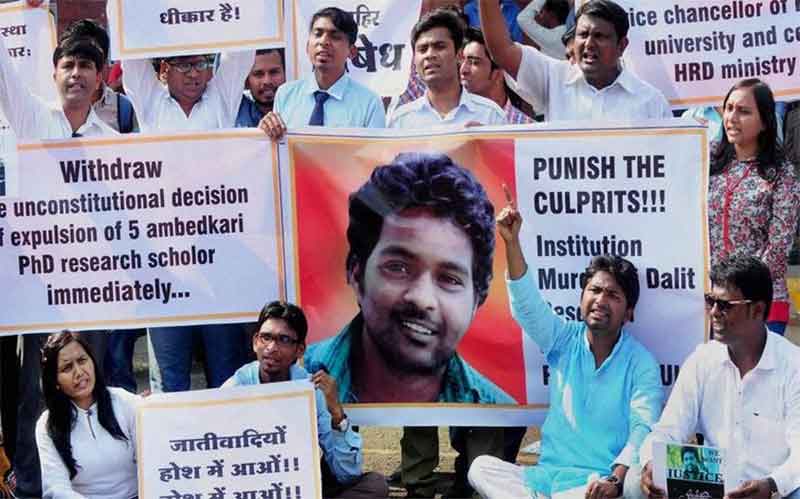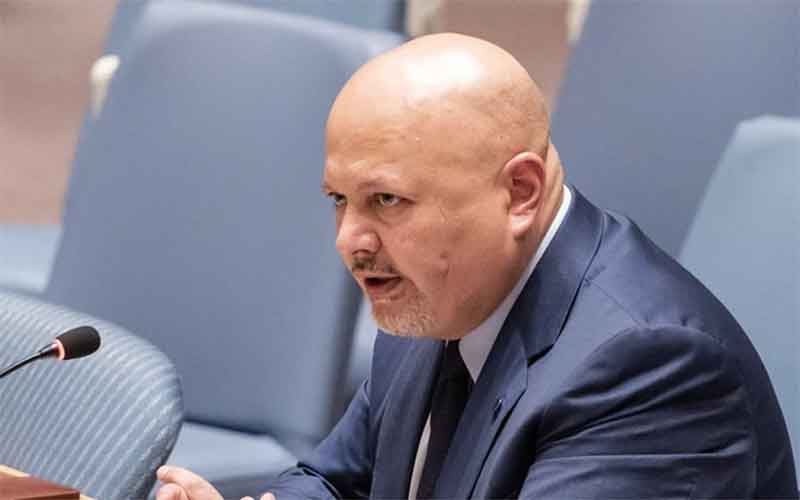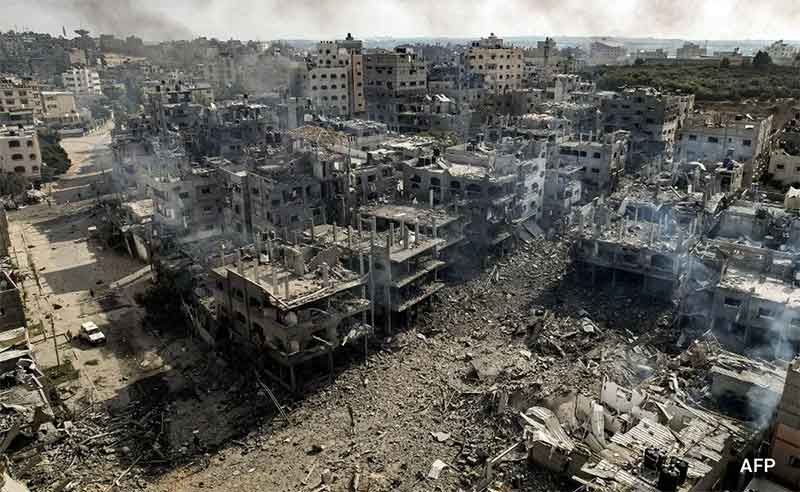
Islam emerged in the 7th century in the south-western corner of the Asian continent. It spread very rapidly throughout the Middle East, North Africa, and the Iberian Peninsula. In the 16th century it was pushed out of Iberia but simultaneously penetrated what we now call the Balkans. Meanwhile, it had been extending its geographic zone eastward towards South-East Asia and southward into the African continent. Islam replaced the Byzantine and Persian empires and soon reached the Atlantic coast – the al-gharb or Algarve – in the west, while its traders had reached Khanfu (Canton) in the east. At its height, three Muslim empires dominated large parts of the globe: the Ottomans with Istanbul as their capital, the Safavids in Persia and the Mughal dynasty in India. They were called the gunpowder empires because they conquered cities and towns from their new kind of weapons like rifles and cannons. However, the territorial control, economic energy and political potency of these empires declined as they were confronted with the multifarious problems of class struggle, imperialism and increasing rivalries.
Mughal Empire
Between 1526 and 1529, Babar the Tiger, a Muslim invader from the north-west equipped with cannon, conquered most of the subcontinent and established the Mughal Empire. A succession of Islamic rulers had overrun much of northern India from the 13th century, imposing centralized modes of governance on the local peasant economies of the Indian Middle Ages. The Mughal emperors further developed the system, ruling through a hierarchy of officials who were given the right to collect land taxes in specific areas for which they had to maintain the cavalry necessary for the military operations of the state. They were not landowners, although they grew rich from the exploitation of the peasantry. There was also another landed class – the zamindars – in each locality. They were often upper caste Hindus from the pre-Mogul exploiting classes, who helped to collect the taxes and took a share for themselves. Large portions of the surplus extracted from the peasants went to the imperial court, the state bureaucracy and its armies. Few of these revenues ever returned to the villages. As Irfan Habib has noted, “The king’s bureaucracy thereby became the principal exploiting class in society”.
The state used the surplus in the cities and towns of the empire. The result was a growth of trade and urban craft production. The Mughal period witnessed the achievement of an unprecedented level of industrial and commercial prosperity, reflected in the general uptick in urbanization. There were as many as 120 big cities, and great concentrations of population, production and consumption in Lahore, Delhi and Agra, and to a lesser extent in Lucknow, Benares and Allahabad. People regarded Lahore as the greatest city in the east, and Delhi was said to be as big as Europe’s biggest city, Paris. However, this cycle of prosperity could not last due to the destruction of the peasant productive base of the Empire. There was no feedback into the villages of the industrial advance in the towns. The growth of the city trades was accompanied by stagnation and impoverishment of the villages. Instead of producing commodities for the use of society, the cities devastated the countryside while eating up local produce. This imbalance between the urban and rural areas was worsened by the political superstructure put in place by the Mughals.
The monarchy followed a policy of moving its officials from area to area every few years so as to stop them ever establishing the regional roots which would give them the ability to resist central control. But this meant the officials set out to enrich themselves as quickly as possible at the expense of the local people, showing little concern about sustaining, let alone increasing, the productivity of the land under their control. At the same time as Shah Jahan was using the tax revenues to glorify Lahore, Delhi and Agra and build the Taj Mahal, agricultural lands were being laid waste through bribery and systematic neglect, as a result of which the peasantry was being robbed and plundered. By the end of the 17thcentury, the weaknesses in agriculture were reducing the productive resources of the empire as a whole and leading to rebellions and civil wars, which further sapped productive resources. By the end of Aurangzeb’s reign, Sikh insurgents were already a problem in the hinterland of Lahore. There was a revolt of the Jat peasant caste in the region between Agra and Delhi, a great Sikh rebellion in 1709, and a revolt of the Marathas, which created deep cracks in the pillars of Mughal rule. The fighting strength of the rebellions was provided by peasant bitterness. But the leadership usually came from zamindar or other exploiting classes who resented the lion’s share of the surplus going to the Mughal ruling class.
Internal disorder of the Mughal Empire opened the gates to endless rapine, anarchy and foreign conquest. Until fairly late in the 17th century, Britain’s trading posts in India were present on Indian soil only by permission of the Mughal Empire, which was quite capable of defending itself against European incursions or dictates. The situation changed only at the century’s end, when the stage was set for the intrusion of the English into Indian affairs as the Mughal Empire succumbed to its own difficulties. The merchant capitalists of the still dynamic region of Bengal saw the easiest way to protect their trade as backing the emerging political power of the British East India Company. In 1757, Robert Clive, an officer in the service of the British East India Company, took Calcutta and defeated the army of the Nawab of Bengal at the Battle of Plassey. The Nawab was nominally the viceroy of the Mughal Emperor in Delhi. In reality, he was an independent ruler, one of several across India who were often at war with each other. The Europeans were able to subjugate India province by province.
A politico-cultural chasm separated the opulence of the Nawab’s court from the poverty of the surrounding villages by. The Bengali peasantry regarded their rulers as oppressors. They had no incentive to fight for them. And because the court was hermetically sealed from the fabric of everyday life, without real roots in Bengali society, it was plagued with perfidy and intrigue. It was not superior firepower that enabled Clive’s army of 3,000 to defeat the Nawab’s army of 50,000. In fact, the Bengalis had many more muskets and cannon than the East India Company. The key to victory was treachery among the Nawab’s senior commanders, most of whose men took no part in the fighting. Plassey was a climacteric in Britain’s colonization of India. The French were eclipsed and many native rulers sought an accommodation with the rising power of the East India Company. The Marathas in central India were conquered by 1823, Sind in 1843, the Sikhs of the Punjab in 1849, and Oudh in 1856. By the middle of the 19th century, the British controlled 200 million people with an army of just 250,000, 80% of whom were Indian soldiers under British officers.
The Company ruled in alliance with puppet nawabs (viceroys) and maharajahs (princes). The mild-mannered Bahadur Shah Zafar, the last of the Mughals, became a powerless man on an East India Company pension, living in the Red Fort in old Delhi, where he spent his time writing poetry. His writ never extended beyond the Fort. Following his titular involvement in the Indian Rebellion of 1857, the British exiled him to Rangoon in British-controlled Burma (now in Myanmar) and executed some of his sons. Indians were thoroughly brutalized by the colonial rule: 25% of tax revenues were spent on the army, as against barely 1% each for health, education, and agriculture. Famines killed one million in the 1860s, 3.5 million in the 1870s, and ten million in the 1890s – what Mike Davis has called the “late Victorian holocausts”. Agriculture was impoverished, native industries destroyed, and wealth siphoned away by foreign capital (Utsa Patnaik puts the estimates at $45 trillion).
Ottoman Empire
In the early 13th century, the Mongols came westwards from the steppes of northern China with a speed comparable to the Arab-Muslim warriors six centuries earlier. The difference was that the Mongols were utterly destructive, destroying everything on their path. In 1258, they took the capital of the Islamic empire, Baghdad, and razed it to the ground. The Byzantine Empire, located in what is now western Turkey, would have been conquered by the Mongols if they had not been stopped from reaching the Mediterranean by the Mamluks who, from their capital Cairo, successfully defended their Middle Eastern domains. However, in the wake of the destruction wrought by the Mongols a new power entered the stage: Turkish tribes from Central Asia united under Osman, and would become known in the centuries to follow as the Osmans or Ottomans. Osman turned against Mongol rule and began a period of conquest. In the century that followed, Ottoman armies expanded into the eastern Mediterranean region, took the Balkans, swallowed Hungary, conquered Cairo, captured Algiers, seized parts of the Ukraine and Poland and threatened Vienna. They even captured the impregnable city of Constantinople, the capital of the Byzantine Empire, and brought an end to Christian rule in the East.
On four occasions Muslim armies had laid siege to Constantinople – each time the city had survived. But from 1300, the frontier emirate of Anatolia began slowly to eat into Byzantine territory, and in 1453 old dreams were fulfilled and the ancient city of Byzantium acquired its present name: Istanbul. The sultan in Istanbul was recognized as the caliph by the majority of Muslims and became the caretaker of the holy cities of Mecca and Medina. Istanbul became the new centre of this world. The overwhelming majority of Arabs became the subjects of the sultan. The wealth of the Ottoman Empire came majorly from peasant agriculture. But the Ottomans had long traded both with western Europe (through Russia and Scandinavia via the rivers which fed into the Black Sea and Caspian Sea, and through southern Europe via trade with Venice and Genoa) and India and China (via overland routes such as the “silk road” which ran north of Afghanistan, and through ports on the Red Sea and Persian Gulf). Until the mid-18th century, there were slow but steady advances both in agriculture (the spread of new crops like coffee and cotton) and handicraft industry. However, by the beginning of the 19th century, the Ottoman Empire was increasingly confronting internal and external pressures. The free development of economic and social forces in the Ottoman Empire was blocked by military-bureaucratic, feudal, and tribal elites determined to defend traditional power and privilege.
As a result, during the 18th century, geopolitical power shifted from a stagnant Ottoman Empire to more dynamic European rivals. A Eurocentric capitalist world economy came into existence around 1500, and subsequently incorporated other lands into this world economy as its peripheral and semi-peripheral components. Incorporation destroyed the integrity of self-contained world empires, including that of the Ottoman dynasty. Products of European industrial capitalism invaded Ottoman markets in the late 18th and early 19th centuries. Disintegration set in as Manchester cottons breached the Ottoman borders and opened the way for a flood of cheap European manufactured goods. This invasion set back domestic craft production and encouraged commercial agriculture. While these developments immiserated artisans and hurt merchants active in internal Ottoman trade, they enriched import-export merchants (the core of the comprador bourgeoisie) and commercial landowners (latifundists). As the Middle Eastern networks of production and trade were being disrupted by imperialist free trade, Europe was exporting capital in the form of loans and investments, thus creating capitalist enterprises and leading to European control over debtor governments’ finances.
In 1798, Napoleon had conquered Egypt until driven out by British troops, and in 1830 the French monarchy captured Algeria despite vehement local resistance. Russian forces seized much of the Caucasus and the Black Sea coast, and set their sights on Istanbul itself. Serbs rebelled against Turkish rule and set up an autonomous kingdom in 1815, and Greeks carved out a state with British and Russian help in the 1820s. Romania and Bulgaria got their independence in 1878. The Russian tsars encouraged similar movements elsewhere, posing as the “protectors” of ethnic groups speaking languages similar to their own and belonging to the same Orthodox branch of Christianity. The Russian advance began to frighten the rulers of Western Europe, even when they relied – as did Austria and Prussia – on Russia’s armies to crush revolution in their own lands. The desire to maintain the Ottoman Empire as a barrier to Russian expansion dominated European diplomacy right up to the outbreak of the First World War in 1914, and became known as the “Eastern Question”. British governments spearheaded these efforts. Propping up the Ottoman rulers allowed them not only to check Russian power – which they saw as a threat to their own rule in northern India – but also ensured the Ottomans allowed British goods free access to markets in the Middle East and the Balkans.
After supporting the Turks in the Crimean War (1853-6) as a bulwark against Russian southward expansion, Britain and France made loans to fund railways and armaments. Late 19th century modernization forced the Ottoman Empire into semi-colonial dependency. The regime of Sultan Abdulhamid II (1876-1909) spent 60% of state revenue on the army and administration and 30% on interest payments to foreign bankers. The prolonged death-agony of the Ottoman Empire encouraged an insecure Turkish nationalism. In 1905-7, inspired by the Bolshevik revolution, the Armenian people of eastern Turkey rose in revolt against new taxes and military conscription; the Ottoman regime was unable to suppress the revolt. Taxes were cancelled and an amnesty granted. But before this had happened, the revolt had spread to other parts of the empire. An underground opposition network, the Committee of Union and Progress (CUP), was formed among junior army officers serving in the Balkans. The heart of this “Young Turk” movement was Ottoman-ruled Salonika.
On July 23, 1908, the CUP leader Enver Pasha restored the Ottoman constitution – which had been granted in December 1876 only to be annulled three months later. The revolt immediately extended across the Ottoman armies in the Balkans. The day after Enver’s proclamation Abdulhamid announced parliamentary elections. With its army in revolt, the dictatorship had capitulated. Between July 1908 and April 1909, the Ottoman Empire was governed by an unstable dual power, with the palace and the barracks involved in an extended tussle over political authority. In mid-April 1909, the crisis exploded. Islamist conservatives, with the tacit support of the Sultan, mounted mass demonstrations against the new government in Istanbul. The CUP moved to crush the counter-revolution. Troops from the Balkans entered Istanbul and restored the constitution. Thereafter, they occupied the Yildiz Palace and forced Abdulhamid to resign. Thus, state power was now in the hands of the CUP leadership. But the accumulated contradictions of the Ottoman Empire proved unsolvable for the regime. The years 1909-14 were to be a period of continuing crisis.
The Italian bourgeoisie proclaimed its colonial ambitions by grabbing Libya in North Africa from the Ottomans. Later, they seized the islands of Rhodes and Kos. A year after that, a league of Balkan nations drove the Ottomans from their last foothold in Europe. The embattled CUP leaders became increasingly despotic and heavily dependent on foreign aid to build railways and modernize the armed forces. In January 1913, the constitutional government was overthrown in a military coup and replaced by an autocracy of three top CUP leaders. Growing dependence on German capital and German military advisers led, in early August 1914, to a secret military alliance with Berlin. The CUP leaders were now proclaiming pan-Turkish nationalism, leading to the intensified oppression of national minorities. These developments went hand-in-hand with warmongering in the Caucasus and the transformation of the Ottoman Empire into an outpost of German imperialism.
The Young Turks brought the Ottoman Empire into the First World War on the side of the Central Powers, Germany and Austria-Hungary. The principal war aim was defined as pan-Turkic expansion into Central Asia and the Caucasus at Russia’s expense. Everything ended in debacle with the victory of the Allied Powers. The victors of the war divided the Ottoman Empire and the Middle East in general, amongst themselves. They drew arbitrary borders around new states – Lebanon, Syria, Transjordan, Iraq, and Palestine among them – which France and Britain dominated through the mandate system. While discussion was under way on what to do with the Ottoman rump state in Anatolia, impatient Greeks decided to put their idea of a Greater Greece into practice: Greek forces invaded the western Turkish shores in 1919 and moved inland to repossess those areas that were apparently part of the historical Greek heritage. However, a Turkish nationalist force led by Kemal Pasha (later Ataturk) staked its claim to what is now Turkey, preventing the British from handing over Istanbul to the Greeks. For the first time in its history, thanks to Ataturk, Islam was without a Caliph.
Safavid Empire
The Safavid Empire (1501-1736) arose in today’s border region between Turkey, Iran, and Azerbaijan. Safavids presided over a vast and variegated territory, stretching from the Alpine region of the Caucasus Mountains to the hot, arid zone of the Persian Gulf and the Arabian Sea. The empire was established by a group of radical Shite Sufi mystics whose leader Ismail claimed to be an incarnation of the spirit of Ali, an important Shite figure and the son-in-law of Mohammed. The main Safavid claim to legitimacy was religious in nature, based on their presumed descent from Musa al-Kazim, the seventh Imam in Twelver Shi’ism. Like the Mughals, they also considered themselves heirs to the Timurid legacy, most directly via the successor dynasty represented by Sultan Husayn Bayqara (1464-1506) in Herat. The ancestral connection to Timur was concocted at a later stage, and more particularly under Shah Abbas I, probably to compete with Ottoman pretensions. The backbone of the Safavid military was constituted by tribesmen loyal to Ismail’s messianism. Its capital was established at Isfahan. The Safavids fought the Ottomans frequently over territory in Iraq and the Caucasus, and the Mughals for territory in Afghanistan and Pakistan.
In fact, in the 16th century, the principal thrust of Ottoman battles was against the Safavids in Iran, who represented more of a threat than a prize for them – they were not interested in conquering Iran. The Safavids were a problem because they were Shias and there was a large Shite population in eastern Anatolia, of which the Ottomans were very suspicious. The result was preemptive Ottoman animosity against Safavid influence within their own territorial precincts – for fear that it might cut the Ottoman Empire into two halves. They mounted many campaigns against the Shite Alevis, whom they called Qizilbash or “redheads,” from an old Greek practice of wearing red hats. The city of Kandahar was a bone of contention between the Safavid and Mughal empires, and was conquered and re-conquered 12 times between the early 16th and early 18th centuries. On the whole, this rivalry was not allowed by both of them to translate into a general military conflict colored with religious differences. Though the Mughals were inclined to form an anti-Persian league of Sunni powers, they were not averse to making a deal with the Safavids behind the back of other Sunni powers, mainly Uzbeks and Ottomans.
The Safavid dynasty succeeded in unifying the Persian nation and, alongside the dynasties of the Ottomans and the Uzbegs, stabilized the Middle East. The Safavids welded together Turks, Persians and Arabs, local tycoons and client chieftains, by their resolute championship to the Shia sect of Islam. Shah Abbas (1587–1629) gave new energy to the dynasty by developing efficient domestic and foreign trade and promoting technical advance. He built caravanserais and bazaars, and transplanted vibrant communities of Armenians from frontier zones where their efforts were continuously undermined by war to securer and more backward areas. Safavid was a modest economic player in West and South Asia in terms of population numbers, productivity, and resources. Yet, its strategic location at the crossroads of Asia’s commercial arteries allowed it to punch well above its weight in terms of trade – especially trade in transit. The reign of Abbas represented the high mark in this development. He established a viable maritime alternative to the overland trade route by facilitating the maritime connection via the Persian Gulf, with the aim of depriving the Ottomans of revenue.
In the process, the Safavid Empire became more firmly connected to the wider Eurasian market, with commodities like silk and porcelain moving into the center of a hemispheric commercial network. Safavid Iran’s largest trading partner to the East was Mughal India. While Mughal rulers had the luxury of being able to merely preside over a powerful laissez faire economy that allowed them to have what was essentially a free-trade foreign economic policy, Safavid Empire instituted a kind of state capitalism and an Iranian mercantilism to develop and protect the polity’s more fragile economic situation. Despite its commercial vigor, Safavid Iran commanded far fewer economic resources than the Ottoman and the Mughal states, and Isfahan certainly projected less military power than Istanbul. The Safavid Empire’s aggressive, and expansionist phase was explosive but brief, fizzling out as the limits of its military power came into focus – beginning with the crushing defeat against the Ottomans at Chaldiran in 1514. For the remainder of the dynasty’s life span, the Safavids softened their posture, particularly in their military confrontation with the Ottomans. This was in part a result of being surrounded by inaccessible mountains and remote deserts and being wedged in between two empires endowed with far greater resources.
More specifically, Shi’ism’s ability to underpin Safavid Iran with a proto-national identity made it a demarcating ideology directed against its tribal and Sunni neighbors. These ranged from the Lezghis of the eastern Caucasus to the Uzbeks of Khurasan, to the Afghan and Baluchi tribes scattered around the vast deserts of Kirman, Sistan, and beyond – with the Ottomans and the Mughals looming in the background on either side. As early as 1512, Shah Ismail implicitly gave up on the dream of a world revolution and settled on Shi’ism in one country as part of his post-revolutionary consolidation. The loss of Iraq to the Ottomans in 1638 entrenched this strategic stance. From that moment onward, the Safavid state folded in upon itself. Its military power, which ever since Chaldiran had ceased to be aggressive, now became clearly defensive. This reflected the evolution of the Safavid state from a tribal formation built on the passionate premise of heroic battles to a sedentary polity led by a shah living in his palace and pursuing consolidation, comfort, and self-preservation. The Safavid dynasty lasted, despite a series of less competent monarchs, till 1722 when Persia was ravaged and Isfahan sacked by Afghan invaders, Sunnite and obscurantist.
The Afghans were eventually expelled by a Turkoman thug, Nadir Shah (1736-1747), who reinforced his victory by invading India, sacking the Mughal capital, Delhi, and subduing the emirates of Transoxiana. His campaigns, however, were built on the shaky scaffoldings of plunder and thievery which drained the economy. He ruled solely through panic. After his assassination, he left Persia ruined and fragmented. His death resulted in campaigns of terrorization which took the first of the Qajar dynasty, a former vizier, to the throne. The Qajar dynasty practiced pure butchery. Persia was reduced to chaos and famine by barbaric despotism, endless revolts, plague, earthquake, tribal pillage and agricultural collapse. Too feeble to resist, Persia became an area of contention between Russian and British imperialism. Russia had ambitions for a warm water port on the Indian Ocean, the encirclement of the Ottoman Empire and advance toward India. Britain wished to thwart Russian expansion and to extend British hegemony in Asia south of the Himalayas. Both hoped to capture the Persian market for their cheap industrial products. Imperial plans were temporarily derailed by the Constitutional Revolution of 1906-11, which shook the corrupt and degenerate Qajar dynasty, whose kings had virtually sold the country to the tobacco and oil interests of the British Empire.
The Shah and his British advisers crushed the Constitutional Revolution, but the death throes of the dynasty could not be long postponed. The last Shah of the Qajar dynasty was soon removed by a military coup led by Reza Khan, a semiliterate officer of an old Cossack regiment, which had been created by czarist Russia and officered by Russians to protect the Qajar ruler and Russian interests. Following the 1917 revolution, the regiment lost its officers, who were replaced by locals. In 1921, the Soviet government denounced the “tyrannical policy” of the czars, canceled the Persian debt and renounced all concessions and extraterritorial privileges that had been accorded to the regime. While Russia ended its imperialist depredations, Britain continued to interfere in Iran. By 1941, with the outbreak of World War Two, the Persian Gulf and Iran’s vast oil resources became critical for the success of the British Navy. Iran declared itself neutral, but Reza Shah, who had established strong cultural and technological ties with Germany, was perceived as problematic by the Allies. In 1941, Britain dumped Reza Khan and sent him into exile. His incompetent and weak-minded son, Mohammad Reza, was put on the throne. Pahlavis occupied the Peacock Throne for 54 years until they were toppled by the revolution of 1979.
Yanis Iqbal is an independent researcher and freelance writer based in Aligarh, India and can be contacted at [email protected]
GET COUNTERCURRENTS DAILY NEWSLETTER STRAIGHT TO YOUR INBOX










































